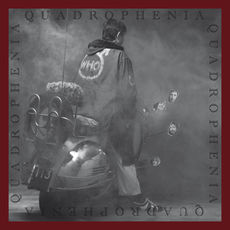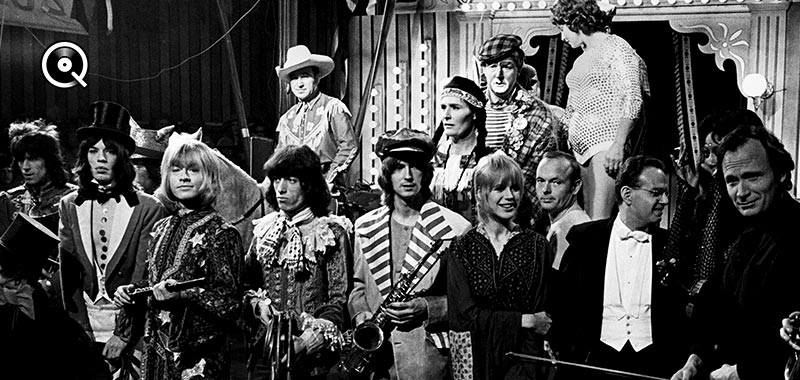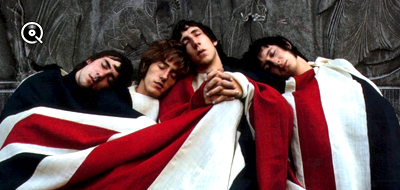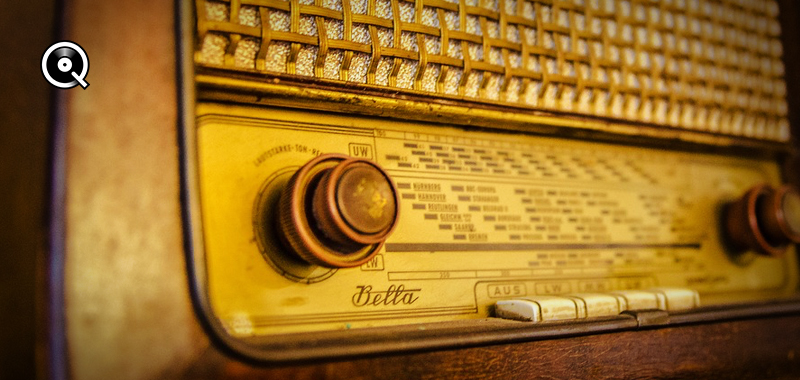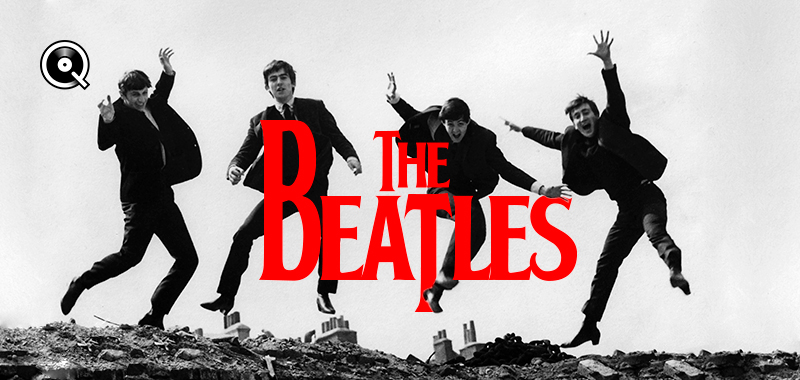It was in this environment that Mick Jagger, Ronnie Lane and Pete Townsend concocted the slightly mad idea of rigging up a circus tent in a TV studio, hiring fire eaters and trapeze artists, making Jagger ringmaster and filming a musical variety show featuring The Stones, The Who, John Lennon and others. Meant to be shown on the BBC, the footage was left unedited and unceremoniously shelved reportedly because The Stones were critical of their performances, and thought others, most likely The Who, (sharp from just coming off the road), had outshone them. Most of the problem lies in the fact that like Jimi Hendrix six months later at Woodstock, The Stones had insisted on being the closing act. And just like at Woodstock, where technical and rain delays meant that Hendrix ended up taking the stage early Monday morning, The Stones performances began at 3 AM when both band and crowd were visibly exhausted.
First cut together into a film in 1996, The Rolling Stones Rock and Roll Circus has now been re-released in a Dolby Vision and Dolby Atmos immersive restoration of the film. It's accompanying soundtrack has a new mix and 192k/24 bit HD audio restoration. Nine extra unreleased audio tracks from the filming have been added. While the film may be a goofy, hippy-dippy artifact of the time when it was made, seeing the youth involved—Jagger snake-shimmying, Pete Townsend windmilling his guitar, John Lennon being verbally obtuse and Taj Mahal with Native American guitarist Jesse Ed Davis—makes this once scrapped project look revelatory. Even better is the sound which has been restored by longtime ABKCO engineer Teri Landi. Landi said in a recent interview for Qobuz that while working on the film's initial release in 1996, she found unfinished rough mixes of the audio from the film done by Peter Grant at Olympic Studios twenty years prior.
"We've all had the experience of being tired and you come off thinking you weren't at your best. Then maybe you file things away because you're busy and you are working on your next album. Or you’re working on a tour; you keep moving on to the next thing. And maybe you review it and maybe you're listening to it and you are like, 'Ahhhh…yeah, I don't know about this.' But then 20, 30 years down the line, you come back to it and you're like we were pretty good actually!"
Fortunately, the four engineers employed to capture the sound of the performance, a group that included soon-to-be-famous Glyn Johns, did a fine job of capturing the performances. Recorded on several ½ inch 4-track tapes, the way in which the tracks were allotted varied from performance to performance. In most instances, one track was taken up by the film synch, one for vocals, another for the band and the last was either a guitar or the audience, as was the case in Marianne Faithful's performance of "Something Better."
The au courant description of working "from the original analogue tapes" may help sell today's glut of expensive reissue LPs, but it can in practice, especially for multi-track remix projects like Circus, be problematic. If the tapes still exist, most are too fragile to be used, so often a digital transfer is created. The analogue source, whether the original master tape or in the case of the The Rolling Stones Rock and Roll Circus the original multi-track session tapes, is played through an analogue-to-digital converter (ADC) and the resulting file is sent to a digital audio workstation like Pro Tools.
A higher sampling rate in a transfer means higher resolution, and the fresh transfers Landi supervised for the The Rolling Stones Rock and Roll Circus reissue were sampled at 192 kHz (192,000 times a second) and a bit depth of 24 which means better resolution, a more accurate copy of the original analogue signal, more frequency detail captured and a wider dynamic range—the difference between the softest and loudest sounds—to the resulting sound. The main equalizers used on the tracks in the new mix were originals from the Olympic Sound Studios Studio One and Studio Three soundboards. The sonic improvement between this new 192/24 high resolution mix and that of the 1996 CD quality release are obvious.
"If I do a transfer at 96kHz/24-bit and one at 192kHz/24-bit and compare them, even then there are definitely differences that anyone can hear. There are different transients (the attack, the brief burst of signal energy or loudest part of the music that you can hear). The low end sounds very different. There's a wider breadth and depth to the sound. Even the wave forms look different from each other," says Landi.
Long desired by collectors and yet abandoned as a failed project by the band that inspired it, The Rolling Stones Rock and Roll Circus is a classic example of the power inherent in the passage of time. Thought of as subpar when judged against the competition at the time, its awkward charms now, thanks to a high resolution restoration, have a fresh charismatic resonance.
Listen to and read our annotated playlist, The Rock and Roll Circus, chronicling the rich music of November 1968 - March 1969.












